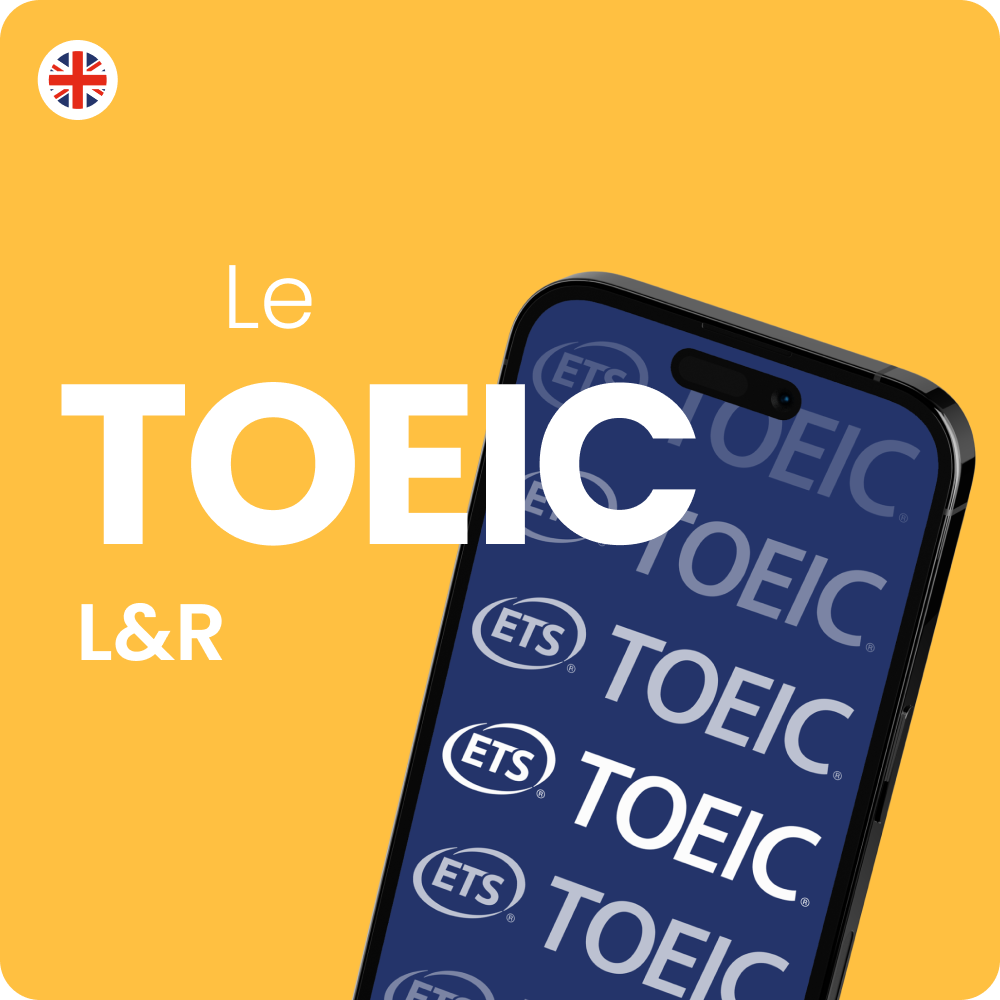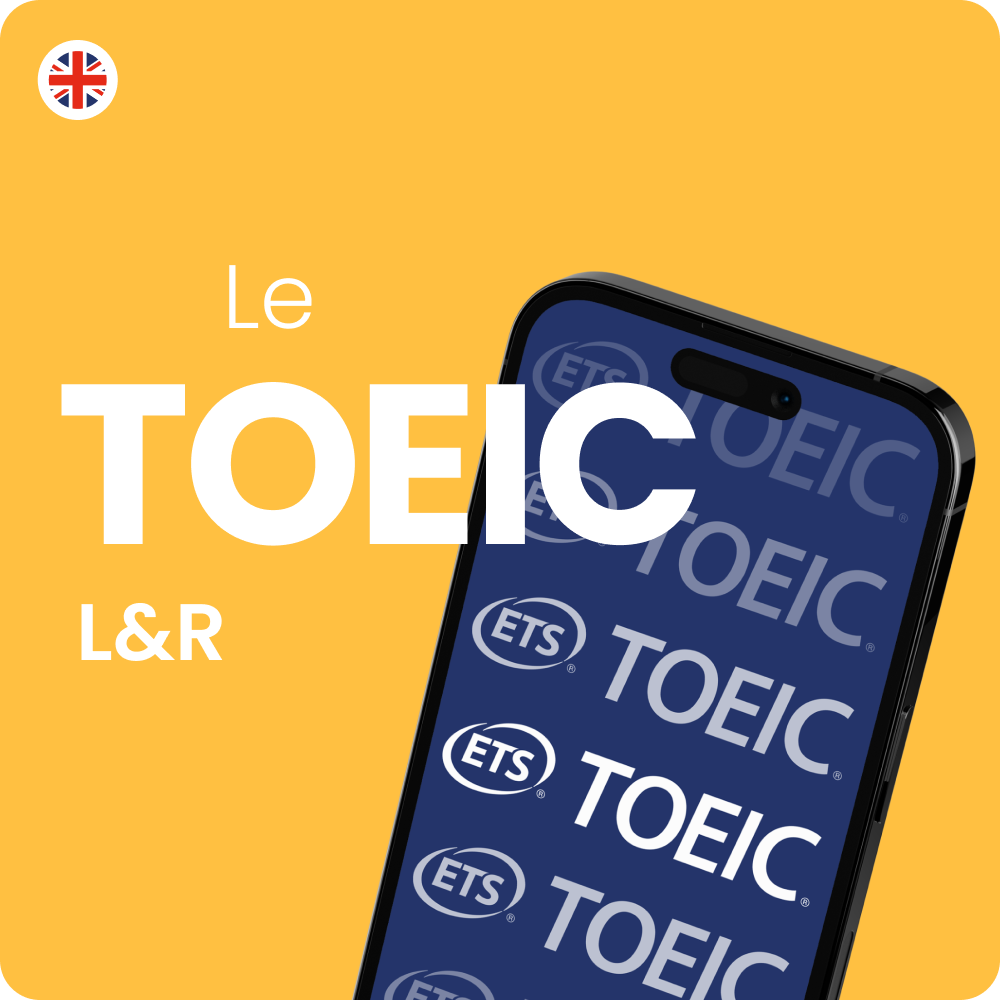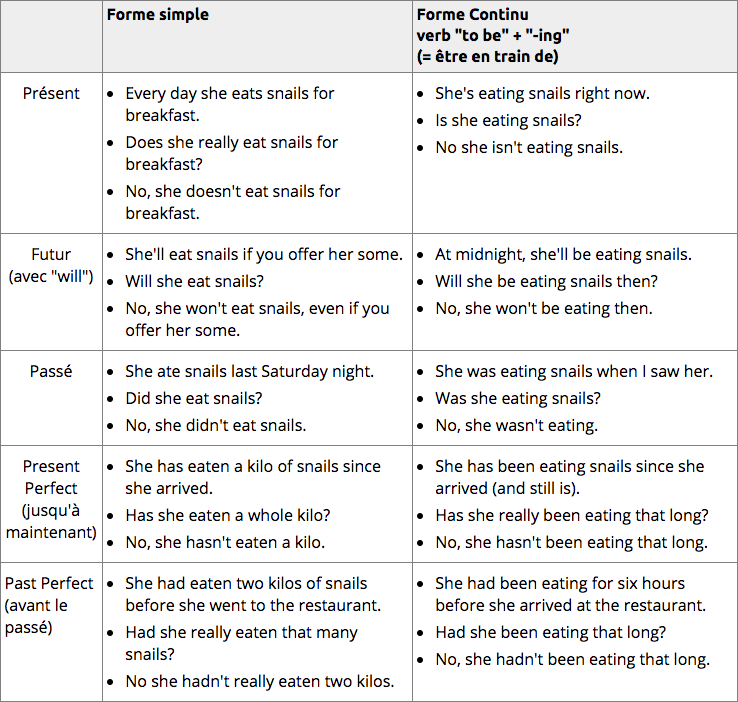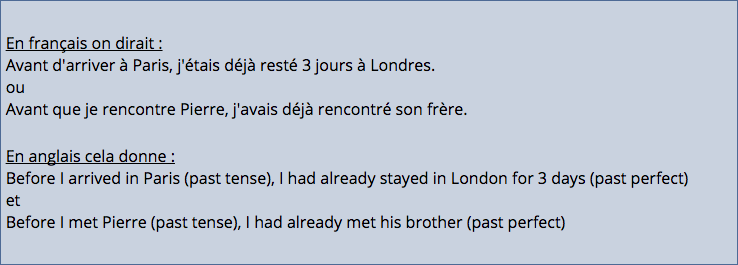TOEIC - conjugation
Essential conjugations for the TOEIC
TOEIC - conjugation
General notes on English conjugation for the TOEIC
Many students are not comfortable with the different forms of verbs in English: " he speaks, he has spoken, he is speaking, he has been speaking, he had spoken… ". If you are having trouble understanding the difference between all these different forms, this section will be helpful.
The grid below gives a general overview of the tense system in English . Unlike in French, there is There are very few conjugations in English . Take the example of the verb " eat ". In French, the forms of this verb are very numerous (manger, mange, mange, mangeons, manges, mangeant ...), while the verb " eat " in English has only five forms: eat, eats, eating, ate, eaten.
This is identical for all verbs. You will never have more than five forms of a verb to learn :
- The infinitive
- The third person singular, which always takes an "s" - except for modal verbs
- The Gerund (gerundive) or the present participle
- The past
- The past participle
Let's take another example, the verb " have " :
- The Infiniti : to have
- The third person singular: Has
- The gerund: Having
- The past: Had
- The past participle: Had
Verb tenses in English express themselves by adding other words to these five basic forms. In order to identify the appropriate form of a verb in a sentence, one must first Identify the tense indicator in the sentence . Typically, this indicator is expressed by phrases such as: at the moment, 4 days ago, since 2004, every day, etc. Sometimes there will be no indicator and you will need to grasp the tense context by reading the parts of the text that precede and follow the verb.
TOEIC- conjugation: Simple and continuous form
The grid below shows the logic of verb tenses . The time indicators are marked with the affirmative form in each box. It is from them that the appropriate form of the verb is determined.
An important tip : When it comes to verb tenses, you should never translate literally from French. The tense systems in English and French are not the same!
TOEIC - Grammar - Conjugation: The "Present Perfect"
It should be noted in particular that some of these forms do not exist in French.
The structure, have/has + the past participle (he has eaten/they have eaten, etc.), is linked to a time indicator that goes to the present, even if the action is finished.
TOEIC - Conjugation - The continuous form
Looking at the grid, we see that each tense has a simple form for the complete action and a continuous form which corresponds to the notion of "en train de" in French.
So we can hear: "I smoke, but I'm not smoking now ."
This difference also exists in other structures, such as the Present Perfect, etc.: "I have been writing letters; I have written 5 of them up to now."
TOEIC - Conjugation of the "Past Perfect"
The structure, had + the past participle (he had eaten, etc.), is linked to a time indicator (often the word before), which shows that the action happened before another action in the past. In other words, we take two steps into the past.
TOEIC - Conjugation: The Conditional

Discover the PrepMyFuture platform
Discover
PrepMyFuture
TOEIC Listening and Reading
Share




